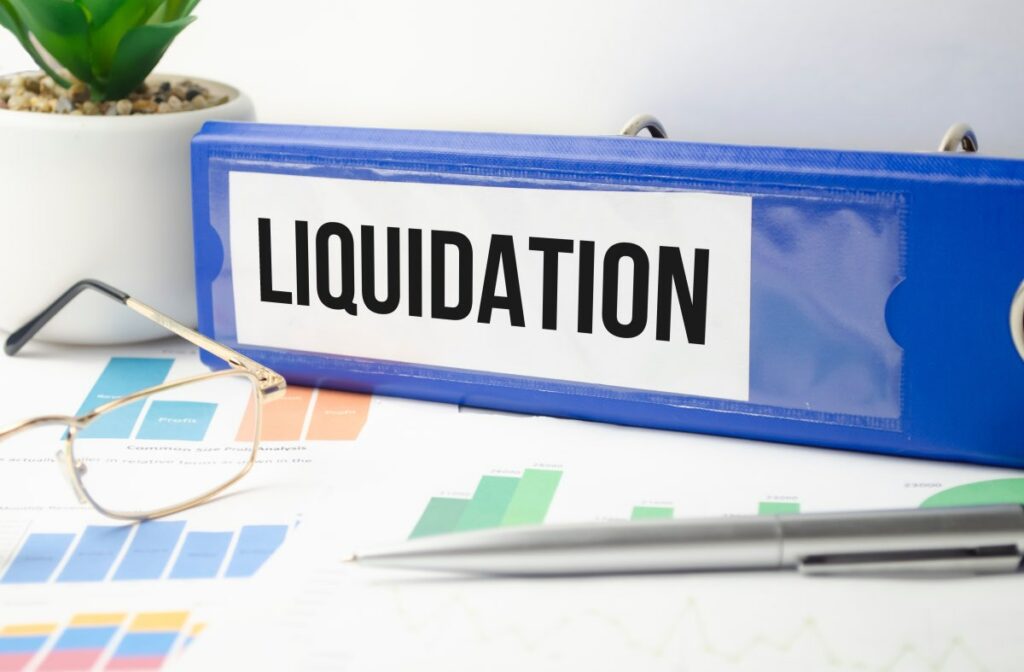- +352 444 222
- Monday-Friday 12:00-18:00
- 20, avenue Marie-Thérèse, 2132 Luxembourg


A liquidation is a procedure through which a company is terminated, and its assets are distributed to stakeholders after having been converted into cash, if possible. One can decide to liquidate a company voluntarily via a so-called “standard liquidation” or through the so-called “simplified liquidation” which is a dissolution in one step without liquidation, consisting in a transfer of the company’s assets and liabilities to its sole shareholder without the need for a formal liquidation procedure. In this article, we will focus on the differences between the standard liquidation and simplified liquidation.
The standard liquidation process involves a three-steps procedure:
Article 1100- 2 of the Law of 10 August 1915 on commercial companies (“1915 Law”) describes the first step. An initial extraordinary general meeting of shareholders (“EGM”), to be held in the presence of a Luxembourg notary, takes the decision to dissolve the company and to appoint the liquidator. As from this date, the company must indicate in all its documents that it is “in liquidation” and the shareholder resolutions must be published as such in the Luxembourg Trade and Companies Register by the company.
The liquidator realises the assets, pays the creditors, and reimburses the contributions made by the shareholders. Any remaining assets may be distributed as liquidation boni to the shareholders. The liquidator then completes his mandate and provides the shareholders with a report for the second general meeting (“GM”), that approves reception of his report and appoints a liquidation auditor (commissaire à la liquidation).
Thereafter, the liquidation auditor audits the work performed by the liquidator and issues a report, which is submitted to the shareholders during a third GM. The GM finally approves both the auditor and the liquidator’s reports. The liquidator closes the liquidation and publishes the liquidation closing to the Luxembourg Trade and Companies Register (Registre de commerce et des sociétés).
The liquidation closing shall be filed as soon as possible with the Luxembourg Trade and Companies Register to allow publication in the Luxembourg RESA (Recueil Electronique des Sociétés et Associations). This filing is mandatory as the company is considered to exist for the purpose of potential remaining creditors’ claims for a period of five (5) years following the date of the publication (this is the so-called “passive survival” of the company).
After the filing, the company will be permanently removed from the Luxembourg Trade and Companies Register, and it should not be possible to re-open a closed liquidation, save in case of fraud.
This kind of dissolution is a one-step procedure and is in theory much easier than the standard liquidation. This procedure is made available when all the shares of a company are in the hands of a sole shareholder.
Luxembourg law formally regulates the dissolution without liquidation when a company is held by a sole shareholder via article 1100-1 of the 1915 Law.
This is in essence a dissolution with immediate effect and without formal liquidation; there is no need to appoint a liquidator. The procedure is straightforward, with the sole shareholder appearing in front of a Luxembourg notary who will approve the documents submitted to him and enact the dissolution.
Following the dissolution, all assets, and liabilities, even unknown, of the dissolved company are transferred to the sole shareholder under a universal title of succession (“transmission universelle de patrimoine”). The creditors of the dissolved company may, within 30 days of the notarial deed’s publication, request the President of the District Court, sitting as in urgent matters, to order adequate safeguards.
A separate statement from the company’s executive body can be requested by the notary with respect to this transfer of debts of the dissolved company, as well as creditors’ information.
The dissolution without liquidation is a simpler procedure than the liquidation. However, when some annual accounts or tax returns are late, one cannot apply for this dissolution without liquidation since the administration will not issue the necessary certificates. Furthermore, there is a risk that an audit will be requested by the administration before obtaining the certificates because it is the last chance to check the files of a company before it leaves Luxembourg. Therefore, more and more tax advisers recommend the standard liquidation’s three steps procedure. It is also worth noting that the three steps procedure described above can be held within a short period of time, even a few days when the liquidation operations are very limited. In conclusion, the choice between the standard liquidation and the simplified liquidation will depend on the company’s situation; the procedure thus requires a legal and tax analysis.
Dear users, on 15/06/2022 Internet Explorer will be retiring. To avoid any malfunctioning, we invite you to install another browser, such as Google Chrome, by clicking here, or the one of your choice.
Please check this before contacting us in the event of a problem.
